January flew by. It seems like a week ago, not a month, that I hastily packed away Christmas crap and emptied our house in advance of getting it ready to put on the market.
We moved into a new apartment nearby in Oakland, where I’ll live through April, and put most of our stuff in storage to transport to Colorado, where I’m moving permanently in May. Then, on the morning the movers showed up, my son had shoulder surgery for a skateboarding accident. Focused on my son and on clearing out the old house, I forgot to budget time and energy to move into and furnish this new place, so I experienced at least a week of scrambling to find stuff while adjusting the pets and myself to apartment living.
Now we’re settled, and I should be back in a groove of training for spring races (see the updated race calendar in my blog’s side column if you want to see what I’m training for), but I’m struggling. In particular, I’m having a hard time with the cornerstone of any training plan, the weekend long run. It’s as if I’m a rookie who feels like any run past two hours is a real stretch. I’m pathetically tired and heavy-feeling.
I was gratified, therefore, to hear Jim Walmsley—the UltraRunner of the Year for the third year straight, and the guy who recently hit an Olympic qualifying time of 1:04 at the Houston Half Marathon—describe on this January 23 UltraRunnerPodcast episode that he, too, felt stressed and tired from moving. He’s 29 and recently moved into a new house. He described having to buy pots and pans, and assemble furniture, and how the hassle and time of doing that negatively affected his workouts and made him concerned about how he’d run in Houston.
“It’s a stress in life that you can’t really quantify like a 10-mile run,” he said of moving. Yes! It’s easy to forget how life stressors, even something as mundane as a too-long trip to Bed Bath & Beyond, can wear you out.
During the past two weekends, I experienced a bad long run (although, there’s no such thing as a bad run if you get it done, really—but I’m jumping ahead), then a good long run. I felt fatigued from the outset of both, but the mindset and circumstances made all the difference.
These two contrasting experiences made me reflect on what makes a long run suck versus what makes it a run to savor.
Part 1: The Suck
Partway through my run two-and-a-half weeks ago, I made a mental list of circumstances that make a long training run extra challenging:
- Ambivalence
- Late start
- Route uncertainty
- Comparing oneself with other, better runners
- Bad weather
- Constipation or diarrhea
- A heavy period (guys, you have no idea)
Just one or two of these factors can sabotage a run. What happens when all conspire on the same run? Let me tell you.
Bad move #1: I had a long-run plan, but then I changed it the night before for reasons not worth detailing. The new route would be a 22-miler going out-and-back from the San Francisco waterfront, over the Golden Gate Bridge, then up a trail to a ridge that connects to the Marin Headlands.
Early that morning, streetlamps illuminated sideways rain from a steady downpour in the wind. I got online while waiting for my coffee to “do its job,” checked live tracking for the HURT 100 and Houston Half under way, thumbed through the Instagram posts of other runners making it look so happy and easy, and generally felt shitty that I felt so unmotivated to run a slow-pace 22-miler. Still no bathroom action, I decided to get real work done by updating clients’ plans.
An hour later, the window revealed persistent rain, dense fog and strong wind. This was not the type of weather in which one should run over the Golden Gate Bridge. I toyed with doing my long run on the treadmill, maybe downloading the dueling Fyre Festival documentaries to watch while I ran, but I can barely stand 40 minutes on a treadmill, and I probably couldn’t figure out how to download a movie onto my phone anyway.
Frustration and a sense of hopelessness simmered as I doubted my ability to get out and run at all. Then I thought of my clients, who endeavor to follow their training schedule not only because of intrinsic motivation, but also because they know I’m checking and holding them accountable. No one checks on me or cares whether I run or go back to bed. It’s up to me to make it happen, to find motivation.
I visualized the Napa Marathon, that springtime goal. Being a spectator there in 1994 had triggered my entire running hobby that’s going on 25 years. I want to prove I can do it again—no, I want to thrive there again.
I realized I can’t just talk the talk, I gotta run the run. In marathon and ultra training, you can’t take shortcuts around quality workouts and long runs. “Preparation is the key to success,” my first coach used to say. And I need to set a good example for my clients. “It is not fair to ask of others what you are not willing to do yourself,” Eleanor Roosevelt once said.
These voices nagged my conscience as the time grew later, urging me to get out the door. Hurriedly, I got completely ready to run—extra layers for the rain, calories, tape to prevent chafing, basic first aid, and I was almost out the door when I palmed my forehead and realized, doh! Gotta take the dog out.
Our dog Beso doesn’t like getting wet, which makes no sense because he’s a Portuguese Water Dog. He flinched and looked up at me woefully as the rain dampened his coat. “C’mon, pee-pee, poo-poo,” I said as we set off down a sidewalk with narrow strips of landscaping that Beso deemed unsatisfactory.
Finally, he sniffed a strip of grass, hunched his backside, paused for dramatic effect, gave me an inscrutable look—and then changed his mind and resumed walking. I yelled, “Beso! Shit or get off the pot!”
We walked two more blocks. He made the droopy-butt move one more time but produced nothing. I let him off leash at a nearby high school so he could scamper on the grass, but he found garbage to eat, and I had to plunge my hand into his mouth to extract a splintering chicken bone. I seethed with frustration. My run felt doomed.
Both of us wet and constipated, my dog and I returned to the apartment. I was on the verge of giving up any attempt to run, suggesting to my husband that we go out to brunch because all I wanted was a platter of cheesy eggs and fried potatoes. To his credit, he said, “Just go, run, I’ll take care of Beso, get going.” (Clearly, he knew my mood would go from bad to worse otherwise.)
It was 9:30, more than two hours past the time I had wanted to start this ill-planned run.
I burst out the door of the apartment building and headed up Broadway Terrace in North Oakland toward Lake Temescal, relief washing over me that finally I was running—but how long would it last? Where would I go? Out-and-back seemed most manageable. Just get to 11, then turn around. Like Spinal Tap, I’ll go to 11.
But I could barely run. I didn’t want anyone I know to drive past and spot me jogging so slowly. I sometimes advise my clients, “Find your easy” on easy days; meaning, it’s OK to run slowly, take it as easy as you need if it’s a scheduled easy day. But I had no gear for “easy” other than walking, and I’d get chilled if I merely walked in this weather. So I forced myself to run. When I looked at my watch and saw I’d only gone about 1.25 miles, I realized that 22 miles might feel like 100 today.
I was so bored, I won’t go into detail because it’d be boring to read. I was so bored, I stopped to take photos in the fog.
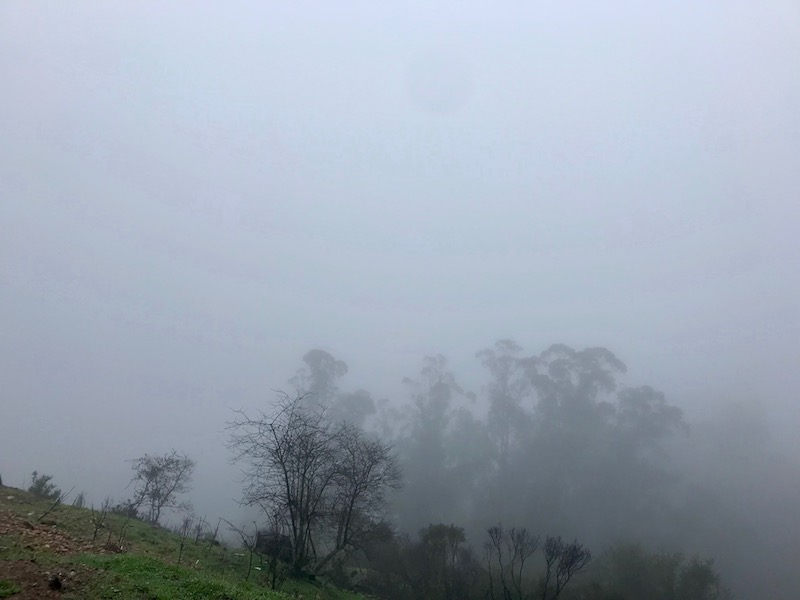
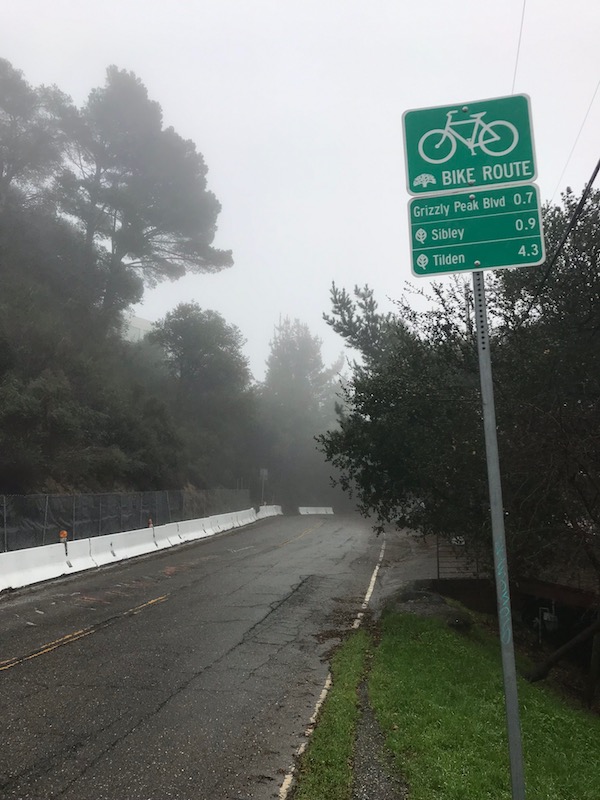
I decided to run up Old Tunnel Road because it’s a grind, and I might as well punish myself, and then the downhill on the way back would be easier. I wanted to reach Sibley Regional Park and transition to trail.
By the time I got to Sibley, about 8 miles into it, I was drenched and starting to shiver. I also noticed my lower back had been cramping and spasming as if having flashbacks to 1998 and 2001, the two times I experienced uterine contractions to trigger childbirth.
I entered the restroom at Sibley with a clear agenda: Sit on the toilet to get the job done (finally), and multitask by changing out of my wet shirt and into the dry one I had wisely packed in a Ziplock bag.
But my plan got sidetracked, and I got more chilled while sitting there wet, when I realized I had a major mess of unexpected bleeding, which explains the lower-back cramping. What the hell, a week early!
For the better part of the decade, I had taken a low-dose birth control pill, which had regulated, moderated and limited my angry period, sort of like Brett Kavanaugh reined in as a circuit court judge, but two months ago I went off it to see if I’m menopausal, and surprise surprise, it’s as fierce and ugly as this winter storm.
I fished out a tampon from a baggie at the bottom of my hydration pack (my UltraVesta is a real grab bag of wonders, God bless it), changed my shirt, and realized I had to get moving before I got seriously chilled. I counted on the trail making me feel better.
But first I paused outside the bathroom to ask someone to take my picture, so I could remember this moment.
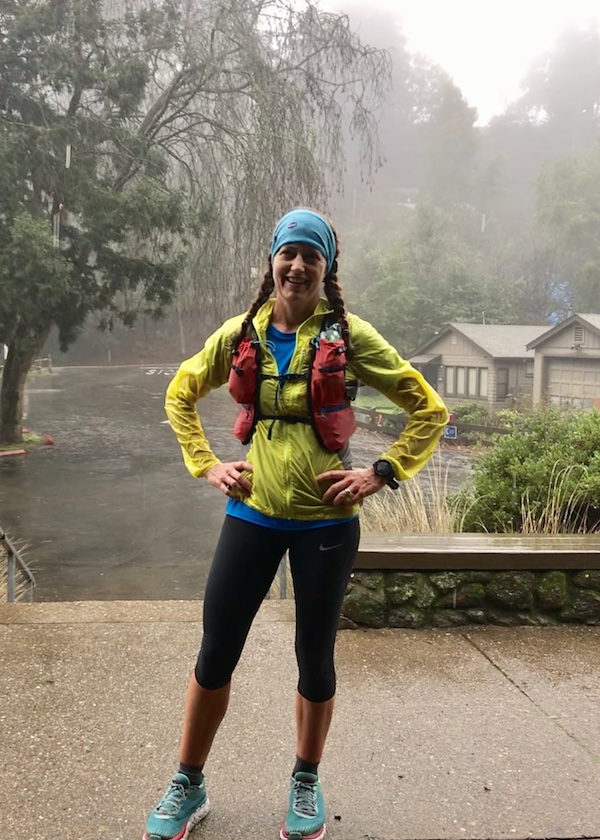
The spur of the first trail swallowed my shoes in mud, so I turned around and went down another branch of trail expecting reliable footing, only to find the trail drowned by ankle-high water, but I ran through it because at this point, things were getting so ridiculous, they were starting to feel just a little bit fun.
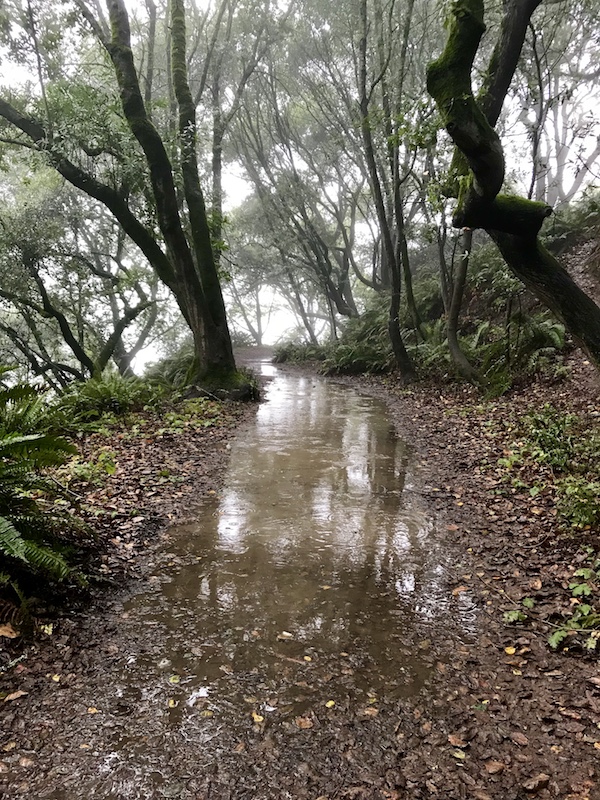
Eventually I made it three miles south to Skyline Gate, and my GPS hit 11 miles. Deciding, “No way in hell I wanna return the way I came and repeat that,” I made a plan on the fly to loop back to my apartment via a different route.
“Embrace the suck,” ultrarunners sometimes say. So I metaphorically embraced it, because this run felt so bad, it started to feel good, because I was doing it in spite of everything.
I felt “Hell, yeah!” better and proud of myself with each passing mile, even when I had to take a long cut to make enough mileage. When I got back to my apartment building, I was about one-tenth of a mile short, so I ran up and down the block to hit 22.
Can there be such a thing as a bad run, if it makes you feel so good when you finish? Does it feel so good because it sucked so bad? Contemplate that on your next long run.
Part 2: One Week Later, The Savoring
The following weekend, I was reminded of the circumstances that make a long run feel like something to relish, even prolong, rather than endure and celebrate only when it’s done. I made a mental list:
- An inspiring and specific destination, such as a peak
- Enough time to feel unhurried
- Enough water along the way to avoid dehydration
- Scenery that makes you want to observe closely
- Patience
- Gratitude
Visiting my hometown of Ojai in Southern California, to spend time with my son and attend a meeting at our high school, I gazed at the mountain range that defines the valley to the north. Its ridgeline rises and folds over itself, and its creeks carve canyons, and all those layers blend together in beige and gray tones of the chaparral native to the region.
I decided to run up to Chief Peak—a steady 4700-foot, 10-plus-mile climb up switchbacks, then along a fire-break road on Nordhoff Ridge, to a peak that looks like a dorsal fin when viewed from the valley.
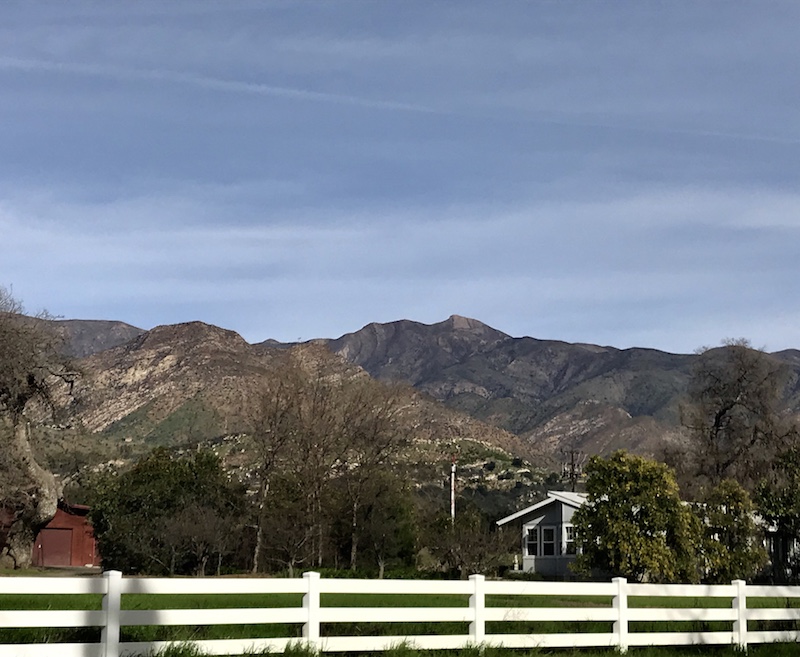
My legs felt heavy from the start, and a bone-deep fatigue from travel and staying up late made me yawn to force more oxygen through my system and to stimulate tears to moisten dry eyes. I let myself hike and yawn; I was in no rush. I told myself: It’s OK to feel tired—that’s a sign you’ve been working hard, not necessarily a sign that you’re out of shape.
The mountainsides look more bare than in past years, due to the fire that scorched this whole area 14 months ago and nearly devoured my school and the town. But green shoots of new growth pushed through blackened and browned vegetation, and small streams from recent rains flowed like an answer to prayers from all the locals who cope with the perennial drought and triple-digit summer temperatures. This landscape is not beautiful the way southwestern Colorado or the Sierra Nevada are dramatically beautiful, but I love it because it’s so familiar and hearty.
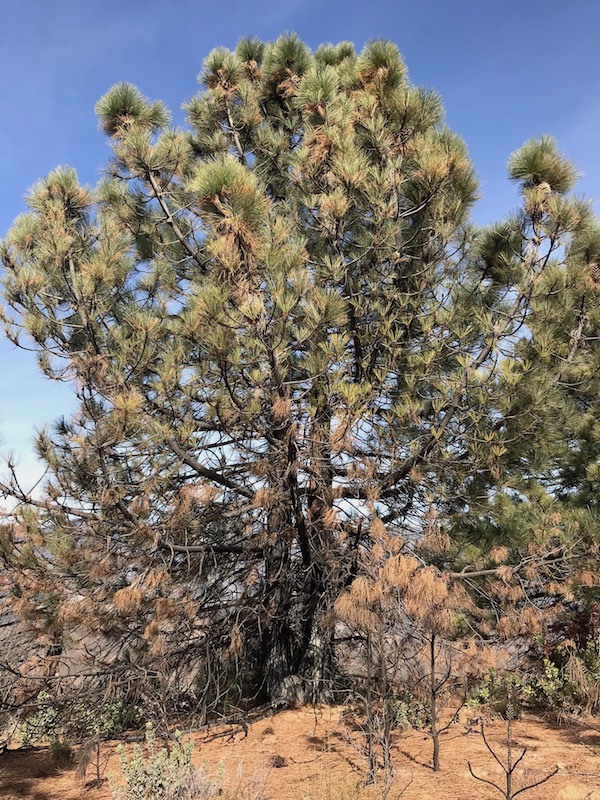
I felt such gratitude for these hours on the trail, and the challenge of reaching the peak—grateful that I had grown up here and could revisit, grateful my body has the ability to do it, grateful that the landscape and town recovered from the fire, grateful my grandparents moved here in the early 1940s. I refilled my bottle in a precious, beautiful creek, remembering how I had dehydrated and wilted in the heat on a run here last October. I traveled through time on this run, thinking about past and future, my mind turning over as much as my legs. I felt alive, not bored.
At the base of Chief Peak, over 5,000 feet elevation, I gazed at the rock outcropping that forms the chief’s nose and concluded it felt too risky to bag the peak solo, given the climbing and rock scramble it requires, so I did not make it up the final 100 or so feet, but I told myself that’s OK, I’m not a wimp, just being smart (though I do want to get up to that top spot next time). I paused to survey the valley and think of my family members, past and present, who spent time around here, and how I want to run and hike like this well into old age, so I need to take care of my health now. Then I ran all the way back down, another 22-miler in my log.
The best kind of long runs exercise the mind as much as body. These runs that we shoehorn into real life, which afford time to think and to explore, feel fulfilling even as they fatigue.
At peace, in my element journeying solo, I experienced none of the angst or boredom that plagued the prior weekend’s run. But I credit that earlier sucky run for making this good long run feel even better.
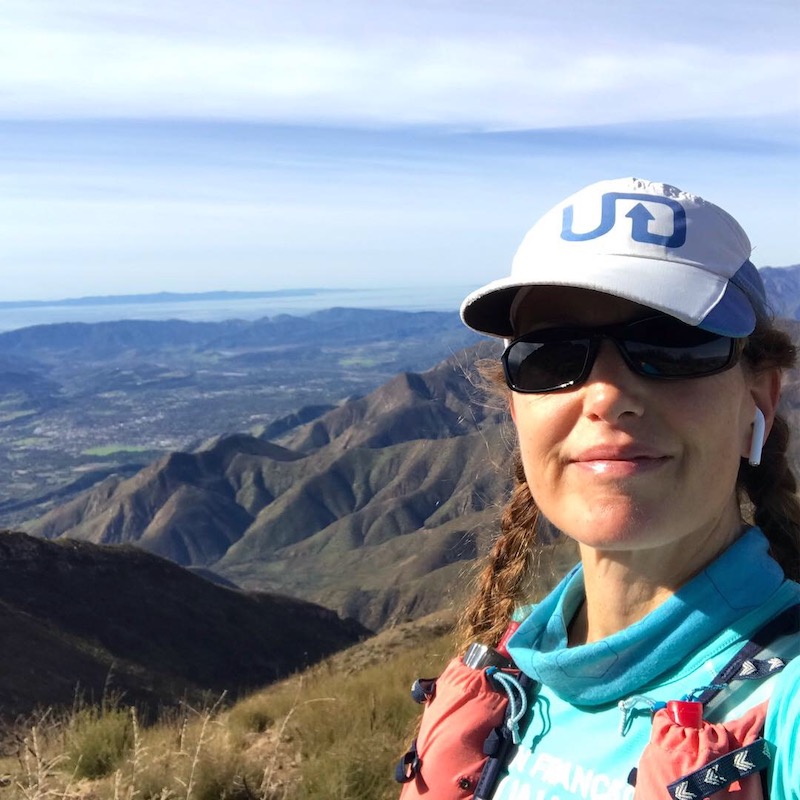

Thank you. Thank you, thank you. I’m miserable today and this helps.
Fantastic read.
I’m going to bookmark this post and revisit it the next time I’m feel crappy before a run. Thank you for your honesty. A rare thing to find these days of sunny selfies and seemingly perfect outdoor experiences by everyone else..!
“…things were getting so ridiculous, they were starting to feel just a little bit fun.”
I laughed out loud when I read that line because I’ve been there too.
The big one for me is the late start compounded with all the fussing to get gear, body, and mind to the trail head. I’ve yelled out many times as I hurried race through hitting the bathroom, walking the dog, and packing up to get out the door – “I just want to F***ing Run!
This is a great post and thank you for giving it to us honest and raw.
Just got your book today, in the mail. Can’t wait to read it. And while I will not understand some of the issues that you have (I’m a dude), I forwarded this on to my wife, who is feeling a little defeated in her training for her first half-marathon.
Thanks for giving the rest of us hope. And keep up the great work!